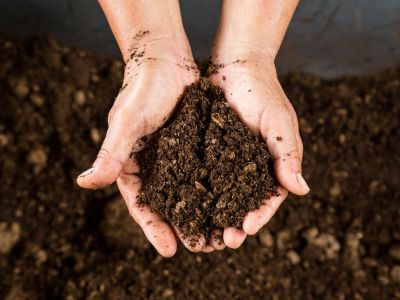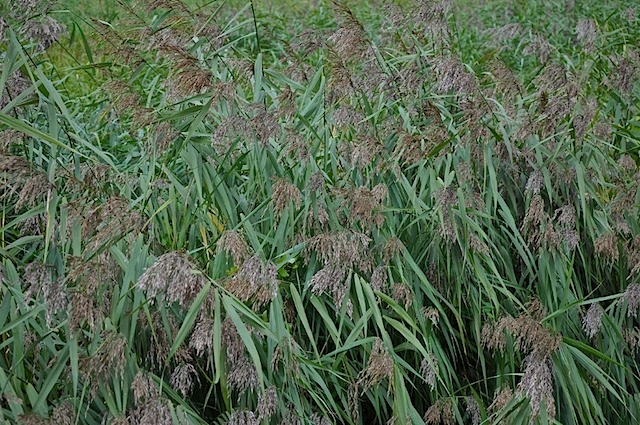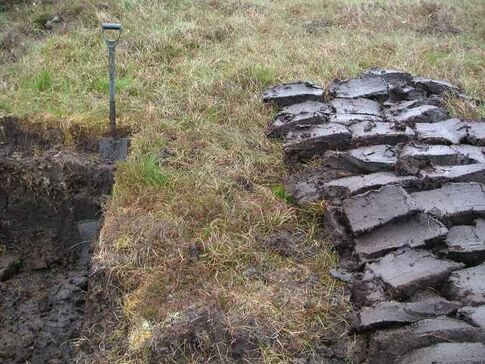Peat
Peat, fuel consisting of spongy material formed by the partial decomposition of organic matter, primarily plant material, in wetlands such as swamps, muskegs, bogs, fens, and moors.
Characteristics
Peat, fuel consisting of spongy material formed by the partial decomposition of organic matter, primarily plant material, in wetlands such as swamps, muskegs, bogs, fens, and moors. The formation of peat is the first step in the formation of coal. With increasing depth of burial and increasing temperature, peat deposits are gradually changed to lignite. With increased time and higher temperatures, these low-rank coals are gradually converted to subbituminous and bituminous coal and under certain conditions to anthracite.[1]
Peats may be divided into several types, including fibric, coarse hemic, hemic, fine hemic, and sapric, based on their macroscopic, microscopic, and chemical characteristics. Peat may be distinguished from lower-ranked coals on the basis of four characteristics: peats generally contain free cellulose, more than 75 percent moisture, and less than 60 percent carbon, and they can be cut with a knife. The transition to brown coal takes place slowly and is usually reached at depths ranging from 100 to 400 meters.
Forms of peat
Peat can be categorized into bog and raised bog, which can be further categorized in eutrophic, mesotrophic and oligotrophic. Raised bog is made above the groundwater table but still fully under water. This can be done in area's where the water level is higher than the groundwater table. Bog is made under the groundwater table. Eutrophic peat, is peat made under nutrient rich conditions. Mesotrophic peat is made under low nutrient conditions and oligotrophic describes peat which is made under nutrient poor conditions. These conditions will lead to all sorts of special types of peat, described below.
Wood peat
Wood peat is present in the bog category and an eutrophic peat. Wood peat can be recognized by the chunks of wood present in the peat. Wood peat is made in sweet water.

Moorland peat
Moorland peat is present in the bog category and an eutrophic peat. Moorland or moor is a type of habitat found in upland areas in temperate grasslands, savannas, and shrublands and montane grasslands and shrublands biomes, characterized by low-growing vegetation on acidic soils. Moorland, nowadays, generally means uncultivated hill land, but also includes low-lying wetlands. Peat made in these area's is classified as moorland peat.

Moss peat
Moss peat is present in the raised bog category and an oligotrophic peat. Peat moss is a dark brown fibrous product of sphagnum moss and other organic materials. It doesn't really decompose because peat moss is so anaerobic and this process takes very slowly. The decomposition process happens without the presence of air, which slows the development rate. It only gains less than one millimeter in depth each year.[2]

Reed peat
Reed peat is present in the bog category and an eutrophic peat. This type of peat consist of the remnants of reed and other water plants. Reed peat is originated in sweet to brackish waters. It is made around the groundwater table to two meters under the groundwater table.

Peat moss peat
Peat moss peat is present in the raised bog category and an oligotrophic peat. This type of peat consist of the remnants of peat moss. Peat moss can easily suck up a large amount of water this causes this type of raised bog to rise above the regional groundwater table. Due to the rise of this type of peat it is very vulnerable for rainwater making it very acidic.

Cotton grass peat
Cotton grass peat is present in the raised bog category and an oligotrophic peat. It can be recognized by the large and stiff cotton parts present in the peat.

Sedge peat
Sedge peat is present in both categories and an mesotrophic peat. This type of peat consist of the remnants of sedge. Sedge peat is originated in sweet waters around the groundwater table to half a meter below the groundwater table.

Classification
Moreover peat can be classified by the presence of fibers and the presence of roots. In the pictures below more information on this classification can be found.
References
Peat

| Group | Organic soil |
| Texture | Fine-grained with decayed vegetation |
| Clasts | <0.06mm |
| Hardness | Very soft |
| Color | brown to black |
| Touch | spongy |
| Image | Peat |
|---|







